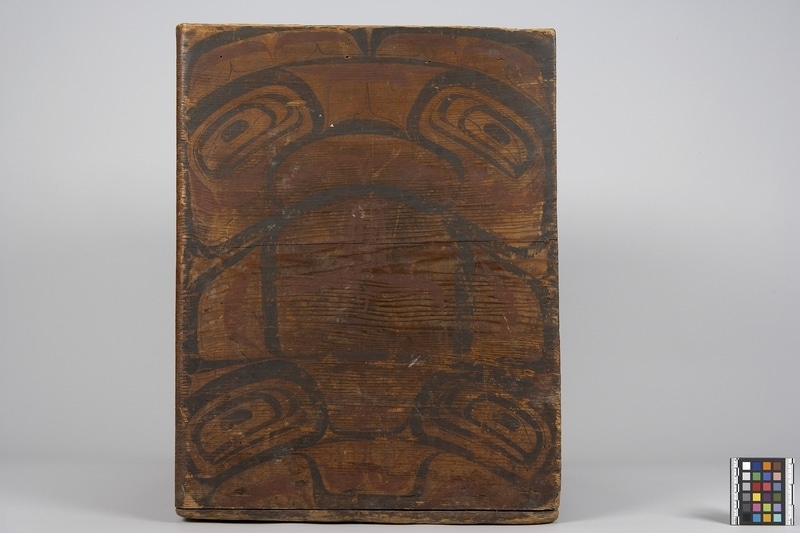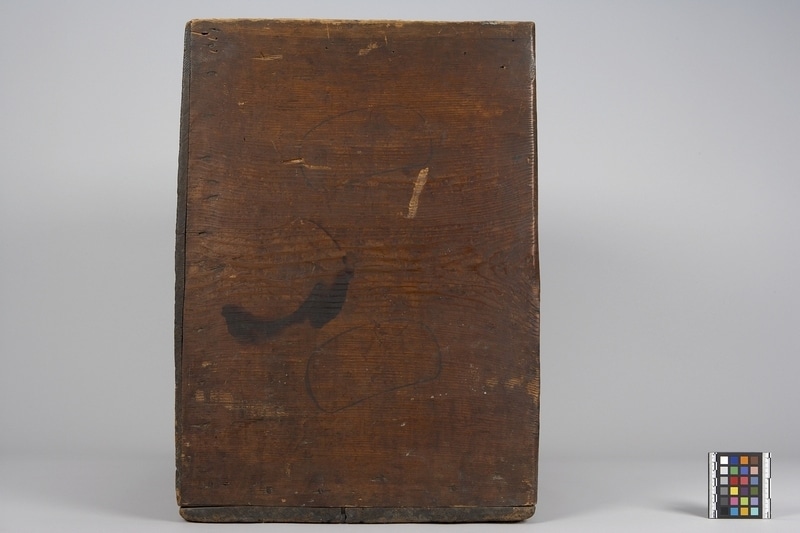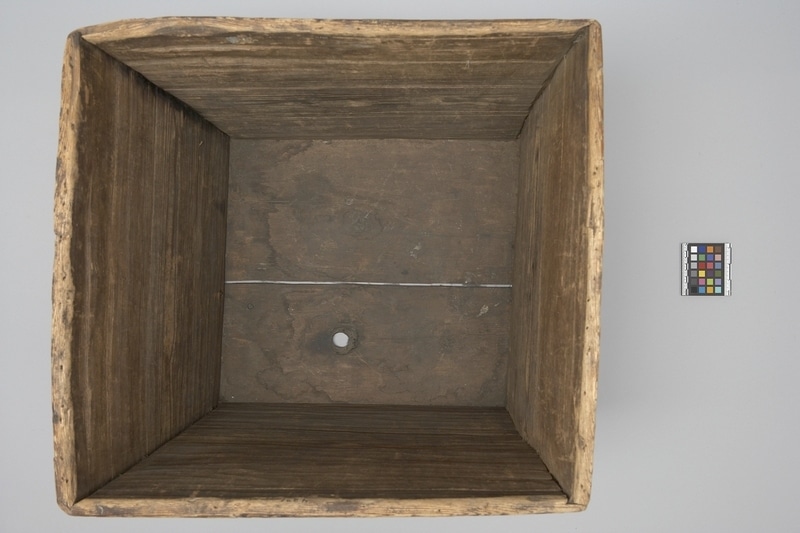Bentwood Box Item Number: A4371 from the MOA: University of British Columbia




Description
Tall square bentwood box with black and red painted Northwest Coast stylized distributive designs. The front and back have complex designs; the sides have two sets of thinly outlined black ovoids. The box is pegged together at the side seam and on the bottom. Base is split and joined with nails. There is no lid.
Iconographic Meaning
Painted designs on sides two and four appear to resemble a bear. Ears, nostrils, split u's perhaps representing teeth and three-clawed paws on side two suggest the front end. Less definite ears, single claws and similar body proportions on side four would seem to indicate the rear. The bear may represent the family crest of the artist. It was believed that the spirit of the crest figure dwelt within the box and guarded its contents.
Cultural Context
storage; trade; status; ceremony
Specific Techniques
Bentwood, or kerfed-corner, containers are constructed by a process unique to the Northwest Coast peoples. The carver begins with a single straight-grained plank of red cedar, or sometimes yellow cedar, spruce, or yew. The surface of the plank is finished with chisels, adzes, and knives; in earlier times, it was smoothed further with sandstone or dried sharkskin. Then three parallel kerfs, or grooves, are carved out at measured points across the width of the board, at right angles to the long edge. The kerfs, which will become three corners of the box, allow the board to be steamed until the wood fibres are softened, and then carefully bent to form a box with symmetrical sides. The final corner, as well as a fitted base, are joined and fastened with pegs (through drilled holes) or laced with spruce root or twisted cedar withes (branches). Storage boxes also have fitted lids of cedar, hollowed from the inside. Finally, painted compositions may be applied to the completed box and shallow carving added to bring the forms into relief. A well-made bentwood box is watertight. Historically, most boxes were used to store preserved foods and material goods; plain cooking boxes could be used to steam or boil food by adding water and heated stones.
Narrative
Cultural designation (Tsimshian) derived from Raley catalogue.
Item History
- Made in British Columbia, Canada between 1850 and 1900
- Collected in Port Simpson, British Columbia, Canada and Lax Kw'alaams, British Columbia, Canada between 1893 and 1934
- Owned by George H. Raley before November 1948
- Received from H. R. MacMillan (Funding source) and George H. Raley (Seller) during November 1948
What
Who
- Culture
- Tsimshian
- Previous Owner
- George H. Raley
- Received from
- H. R. MacMillan (Funding source) and George H. Raley (Seller)
Where
- Holding Institution
- MOA: University of British Columbia
- Made in
- British Columbia, Canada
- Collected in
- Port Simpson, British Columbia, Canada and Lax Kw'alaams, British Columbia, Canada
When
- Creation Date
- between 1850 and 1900
- Collection Date
- between 1893 and 1934
- Ownership Date
- before November 1948
- Acquisition Date
- during November 1948
Other
- Condition
- fair
- Accession Number
- 1960/0432